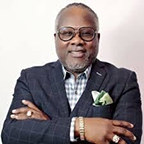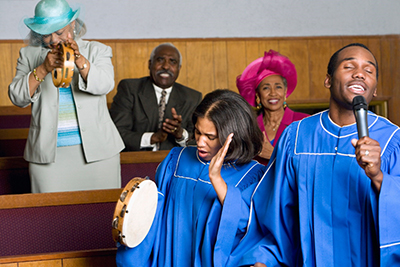The spiritual tradition of praising God by dancing in Black church worship services isn’t taught — it’s passed on by observing elders.
(Source Word In Black):
Joy in a Black church worship setting often leads to physical expression, evidenced by singing, clapping, and even dancing, a long-held practice in holiness or Pentecostal churches.
What has evolved through generations are distinctive patterns of steps never to be confused with liturgical, classical, or colloquial dancing. These steps, thought to have evolved from African worship traditions, are often referred to as the holy dance or merely shouting.
This particular dance is not taught; it’s just caught as children observe their elders and begin to mimic it as soon as they’re able.
Black stories matter
Stay up-to-date on reporting that amplifies the stories, voices, and perspectives of Black America.
Health
Education
Word In Black Weekly
Climate Justice
Finance
Religion
Some call it dancing in the Spirit. Others call it shouting. It’s so recognizable it doesn’t really need a name.
Rev. Ralph L. Dennis

“I was born and raised in a holiness church where dancing was a normal expression of getting ‘happy,’ and it’s been part of my whole life experience,” says the Right Rev. Ralph L. Dennis, presiding prelate of Kingdom Fellowship Covenant Ministries in Towson, Maryland.
Getting ‘happy’ characterizes expressive behavior motivated by the presence of the Spirit of God.
“We didn’t always refer to it as a holy dance. We often called it shouting or just dancing. I learned later in my childhood that we shout with our mouths and dance with our feet.”
Dennis says dancing is just as natural as praising God with instruments, as the Bible instructs in Psalms 150:4
Shannon Davis, an entrepreneur from New Jersey who grew up in a nondenominational holiness church, agrees that no one had to be taught. “We just watched and learned. I believe I was about 12 when I first did it myself for real. I would say it came naturally,” she says.
“The only instruction given was to make sure you were dancing in the spirit and not in the flesh.”
Davis sees the dance as an enhancement of her praise — actually more of a weapon of praise.
Physical and Spiritual Benefits
Some find the worship time less fulfilling when there’s no dancing.
“Back in the day, it felt like if no one shouted, then the Spirit hadn’t moved. I know the Spirit moves in different ways,” says Patrice Amankwa, a high school teacher in New Jersey, who also grew up dancing in church and “play” shouting at home. “If no one dances, it feels like something is missing.”
As for whether there is any physical benefit, Amankwa says yes.
“Recently, I started tracking my steps, and in a Sunday service, I can easily get a thousand or so steps during praise and worship. I have also used praise break music for exercise.”
Joy and Spiritual Strength
For Dennis, it’s more of a personal expression of joy at encountering the Holy Spirit.
“Those who dance and can express their joy beyond the constraints of shame or the ego will likely be spiritually stronger, Dennis says. “The Bible clearly teaches that the joy of the Lord is the strength of his people. And though dancing is not a proof of salvation, I believe it is a suitable expression of gladness and thankfulness unto the Lord.”
Amankwa recalls a specific time of dance.
“A few years back, before President Obama was elected, I told my co-worker that if he became president, I would dance for her. When he won, I did three dances; an old school dance, a newer dance, and a church dance. That’s another name used to describe it.”
A Vision of Unity Through Dance
The idea of dance has the power to give us a glimpse of a more unified spiritual existence.
“I have this image of the new church as the Dance of God — some doing the two-step, others the waltz, line dancing going on, none sitting it out, to and fro gliding, in one timeless happening, an unchained melody of love. In those moments, no one is doing analysis or questioning, especially if we figure out that the Lord of the dance is the Dance,” The Rev. William D. “Bill” Cotton wrote in his newsletter, Memo For Those Who Preach.
“In Matthew the people are listening to Jesus for the last time. ‘Go and teach the nations all that I have taught you in the name of Father, Son, and Holy Ghost.’ And should we get it right, perhaps all people and all nations will join the dance of life. Jew and Arab, two Koreas merged into one glorious waltz, dreamers teaching politicians the two-step—all of God’s children doing some crazy motion in rhythm.”
As Cotton puts it, “Can you imagine Jew and Arab, Korean and Korean, and all “enemies” being called out to the dance floor, two and fro—and perhaps we will decide to look past everyone’s differences too. Wouldn’t that be something?!”

